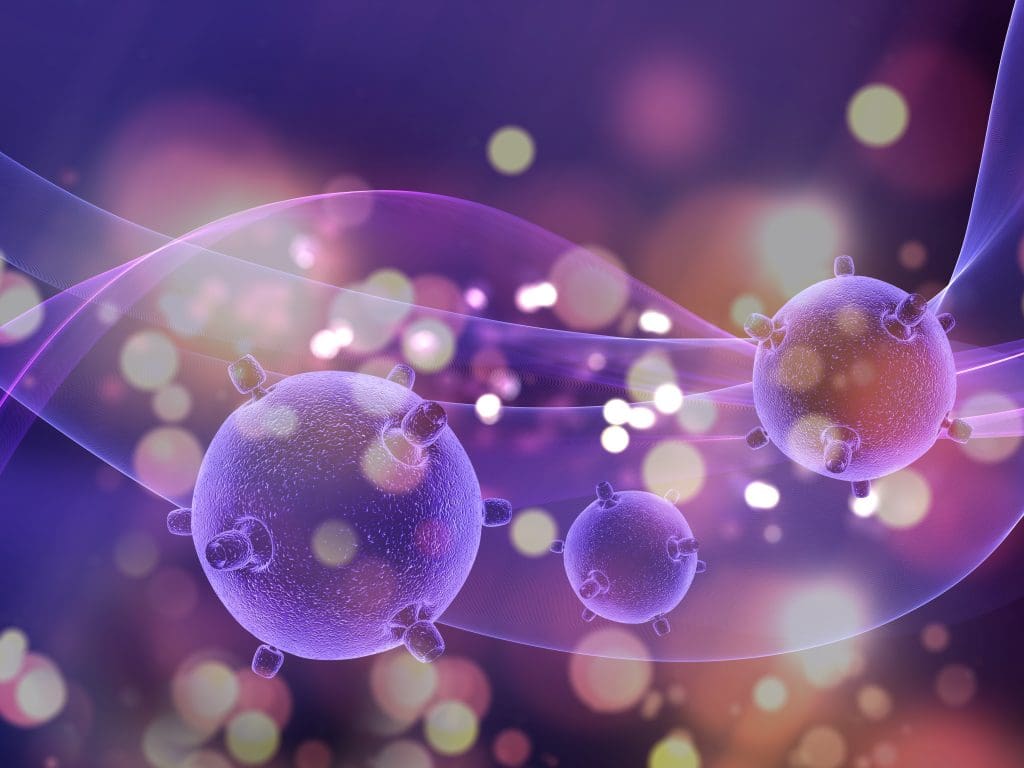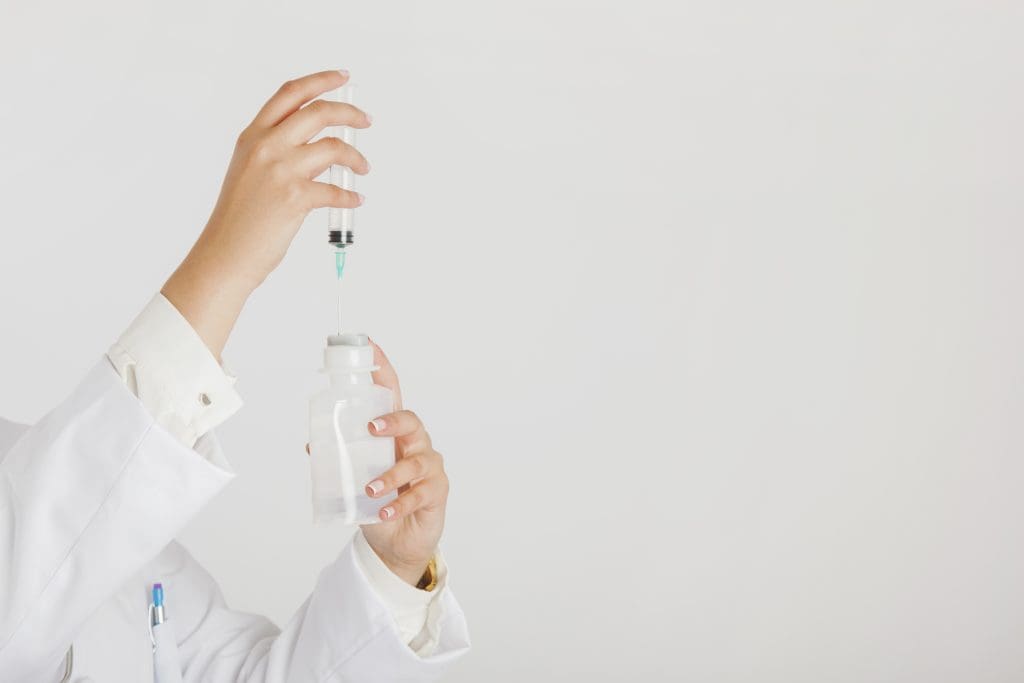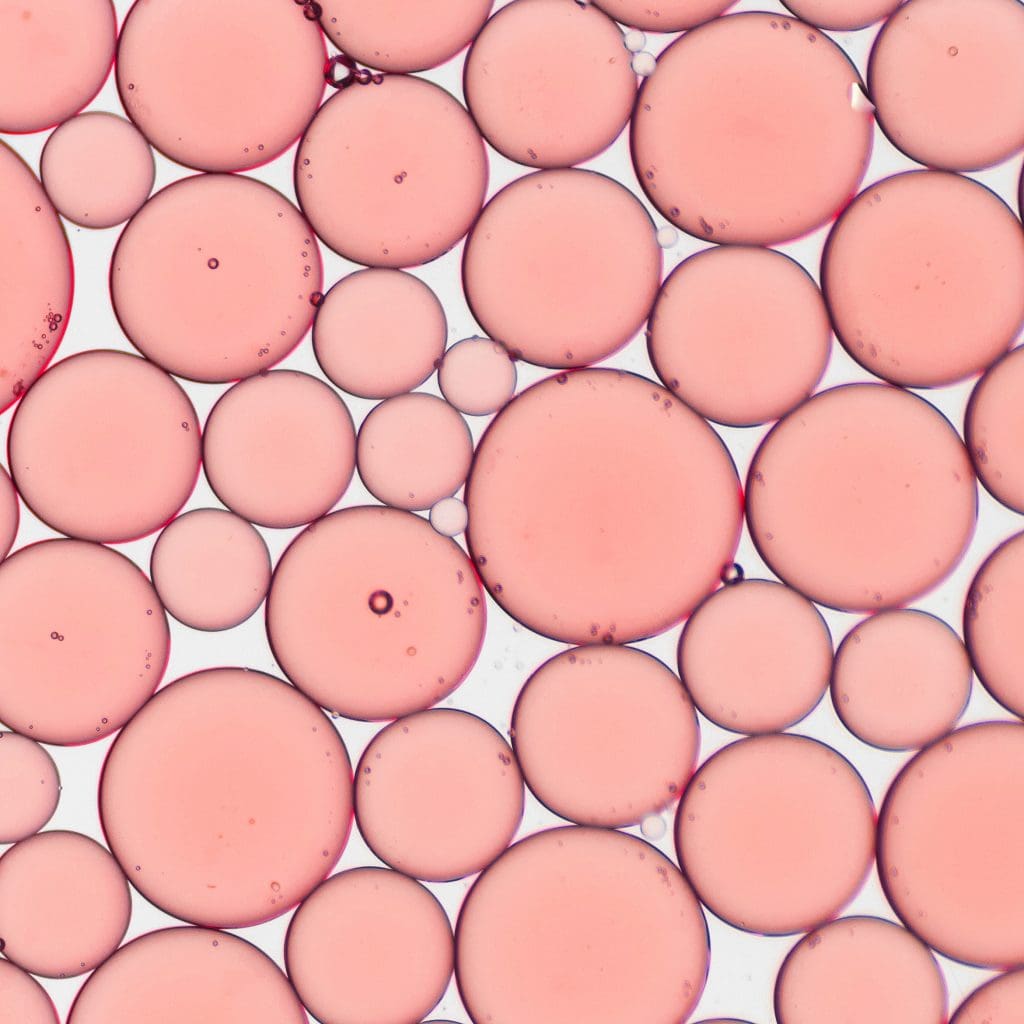Last Updated on November 13, 2025 by Ilayda Cengizhan
Stem cell therapy is seen as a hopeful treatment for many health issues. But, worries about its long-term effects have led to a lot of discussion.
As stem cell therapy becomes more popular, it’s key to look at the possible dangers. This includes bad reactions to stem cell patches.

Stem cell therapy is full of promise. But, it’s important to know its long-term effects before trying it.
Stem cells can grow into different cell types, leading to new treatments for many diseases. These cells can turn into specialized cells, helping to fix or replace damaged tissues.

Stem cells can grow and change into many cell types. They come from embryonic stem cells, adult stem cells (also known as mesenchymal stem cells), and induced pluripotent stem cells. Adult stem cells, found in places like bone marrow and fat, are often used because they are easy to get and don’t usually cause immune problems.
Stem cell therapy uses stem cells to help the body heal and grow back. First, stem cells are taken from the patient or a donor. Then, they are isolated, processed, and prepared for use through injections, IV infusions, or other methods. After that, the stem cells go to the damaged areas, helping to fix and grow new tissue.
Stem cell therapy is being looked at for treating many diseases, like joint problems, back pain, and some brain disorders. For example, stem cell therapy for back pain is seen as a possible non-surgical option. Also, mesenchymal cell therapy and stem cell IV infusion are being studied for their healing powers in different medical areas.
Stem cells’ ability to change and the progress in stem cell therapy are opening up new ways to treat diseases. This gives hope to patients with hard-to-treat conditions.
Stem cell therapy has grown to include many treatment types. Each one is made for different health issues. This variety lets doctors choose the best treatment for each patient.
Stem cell injections put stem cells right where they’re needed. They’re often used for muscle and tendon problems like osteoarthritis and tendonitis. The goal is to help the area heal and reduce swelling.
Benefits of Stem Cell Injections:
IV stem cell therapy gives stem cells through an IV. It’s used for many conditions, including autoimmune diseases and chronic inflammation. The stem cells go into the blood, helping to fix damaged tissues. IV stem cell therapy is a promising way to treat many conditions. It offers a more complete treatment option.

The table below shows the main differences between stem cell injections and IV stem cell therapy:
| Treatment Aspect | Stem Cell Injections | IV Stem Cell Therapy |
| Delivery Method | Direct injection into affected area | Intravenous infusion |
| Primary Use | Musculoskeletal conditions | Systemic conditions, autoimmune diseases |
Stem cell patches and topical applications put stem cells on the skin or affected area. They’re used for skin care and healing wounds. This method treats the area directly, with fewer side effects.

As research gets better, we’ll see more stem cell treatments. This will open up new options for patients and doctors.
Stem cell therapy can have immediate side effects. These can vary in how severe they are and how they affect you. It’s important for patients to know about these possible reactions before trying this treatment.
One common side effect is reactions at the injection site. You might see redness, swelling, pain, and bruising. These reactions are usually mild and go away in a few days.
Some people may have immune reactions to stem cell therapy. These can range from mild allergic reactions to more serious inflammatory responses. It’s key to have a healthcare professional watch over you to manage these reactions well.
Pain and inflammation are common right after stem cell therapy. You can take pain relief medications and follow other care tips from your healthcare provider to manage these symptoms.
Some patients report feeling worse pain after getting stem cell injections. The exact reason is not known, but it’s thought to be due to how the body reacts to the stem cells. This usually doesn’t last long but talking to a healthcare provider about it is important.
In summary, while stem cell therapy has its benefits, knowing about the possible immediate side effects is key. Patients should talk to their healthcare providers about these risks to make sure they get the best results.
Stem cell therapy is promising but comes with short-term complications. It’s important to know these risks to manage expectations and ensure a smooth recovery.
One major risk is infection. This is a big concern for those with weak immune systems. Proper wound care and post-procedure hygiene are key to reducing this risk.
Some may feel tired, nauseous, or have a fever after treatment. These symptoms are usually short-lived but can be uncomfortable. Rest and hydration help manage these symptoms.
Knowing about these reactions helps avoid unnecessary worry. It’s important to seek medical help if symptoms don’t go away or get worse.
Recovering from stem cell therapy can be tough. You might need to change your daily routine to help your body heal. This includes modifying physical activities and managing pain or discomfort.
To get the best results from stem cell therapy, there are things to avoid. Smoking and drinking too much alcohol can slow healing. Avoid them.

Also, follow your healthcare provider’s advice on medications, activities, and follow-up visits. This helps avoid complications.
By knowing these short-term complications and taking steps to prevent them, patients can better manage their recovery from stem cell therapy.
Stem cell therapy is becoming more common. It’s important to know about its long-term side effects. This therapy can help with many health issues, but it also has risks.
Studies have found several long-term problems with stem cell therapy. These include the chance of tumor formation and immune system alterations. The risk of tumors depends on the type of stem cells and the health issue being treated.
The risk of tumors is a big worry with stem cell therapy. Pluripotent stem cells can grow into different cell types. This might cause them to grow out of control and form tumors.
Stem cell therapy can also change how the immune system works. The body’s immune response might be affected. This could lead to autoimmune diseases or other immune problems. It’s important to watch the immune system after treatment.
Stem cell therapy can also damage tissues or organs. The treatment involves putting stem cells into the body. If not done right, it could harm nearby tissues or organs.
| Long-Term Side Effect | Description | Risk Factors |
| Tumor Formation | Uncontrolled growth of stem cells leading to tumor development. | Use of pluripotent stem cells, improper cell differentiation. |
| Immune System Alterations | Modulation of the immune response potentially leading to autoimmune disorders. | Introduction of foreign stem cells, genetic predisposition to autoimmune diseases. |
| Tissue and Organ Damage | Unintended damage to tissues or organs during stem cell injection or infusion. | Improper technique, inexperience of the practitioner. |
It’s key to know about these side effects before getting stem cell therapy. Talking to a doctor is important. They can help you understand the benefits and risks.
Stem cell patches are used for many medical conditions. They are applied directly to the skin. This makes them appealing for those looking for non-invasive treatments.
Users of stem cell patches have experienced some side effects. These include skin irritation and allergic responses. Symptoms can be redness, itching, or rashes where the patch is applied.
Some people’s skin reacts to the patch or stem cells. This can cause mild to severe allergic reactions. If these reactions don’t get better or get worse, you should see a doctor.
There’s also worry about systemic effects from using stem cell patches. These effects could be immune system reactions or other problems. This happens when the stem cells interact with the body’s systems.
The safety of stem cell patches depends on a few things. These include where the stem cells come from, how they’re made, and the patient’s health. Many people have used them without problems. But, it’s important to talk to a doctor before using them. This helps understand the risks and benefits for your specific situation.
Stem cell therapy treats many conditions but can have side effects. These vary based on where the treatment is used. Knowing the risks for each area is key as stem cell therapy grows.
Stem cell therapy for back pain might cause pain at the injection site. It can also lead to numbness or tingling. In some cases, it might make back problems worse.
A study found that while many with lower back pain felt better, some felt more pain. This shows the need for careful patient choice and follow-up.
Stem cell therapy for joints and shoulders can cause pain, swelling, or stiffness. There’s also a chance of infection or allergic reactions to the cells. The use of stem cell therapy for orthopedic conditions requires a thorough assessment of the patient’s overall health to mitigate possible risks.
Stem cell therapy for neurological issues, like Parkinson’s or spinal cord injuries, has big risks. These include immune reactions or unexpected neurological effects.
Cosmetic and anti-aging stem cell treatments can cause skin irritation or allergic reactions. They might not give the desired look. The lack of standardization increases these risks.
| Treatment Area | Common Side Effects | Rare but Serious Risks |
| Back Pain | Pain at injection site, numbness | Exacerbation of back conditions |
| Joint/Shoulder | Joint pain, swelling | Infection, allergic reactions |
| Neurological | Immune reactions | Tumor formation, neurological effects |
| Cosmetic/Anti-Aging | Skin irritation, allergic reactions | Unsatisfactory aesthetic outcomes |
It’s important to know the possible side effects of stem cell therapy. This is true for different treatment areas. Always talk to a healthcare professional to understand the benefits and risks.
Stem cell therapy is promising but has downsides. It’s important to know these to make good choices. As it grows, understanding its limits is key.
One big drawback is the cost. Treatments are pricey, and the benefits may not match the cost for everyone. It’s vital to think about the cost and benefits before starting.
How well stem cell therapy works can differ a lot. This depends on the stem cells, the doctor’s skill, and the patient’s health. So, some people see big improvements, while others don’t notice a change.
There’s no set way to do stem cell therapy. Different places and doctors use different methods. This can lead to mixed results. It’s hard for patients to know what to expect.
Many insurances don’t pay for stem cell therapy. They see it as experimental or optional. This makes it hard for many to get the treatment. Patients should check their insurance and think about the costs before starting.
In summary, stem cell therapy has its benefits but also downsides. High costs, varied results, lack of standard methods, and insurance issues are some of these. Patients should talk to doctors to understand these points and make the best choice for themselves.
Stem cells in medicine have sparked a big debate. It involves ethics, rules, and how well they work. Many people, like doctors, regulators, and patient groups, are involved in this argument.
Using stem cells raises big ethical questions, mainly about embryos. People disagree on the value of embryos and the risks of harm. Ethical concerns have made rules and guidelines vary a lot around the world.
The rules for stem cell treatments are not clear or the same everywhere. Countries have different standards, causing regulatory challenges. This can mean patients face different safety and effectiveness levels.
Marketing of stem cell treatments is also a big issue. Some clinics make unproven claims about their treatments. This can confuse patients. There’s a need for better rules on how these treatments are advertised.
The debate over stem cell therapy will likely keep going. We need more research and clear answers on safety, effectiveness, and ethics. But, the mix of ethical, regulatory, and treatment issues makes it a hot topic for now and the future.
Understanding the safety and risks of stem cell therapy is key for patients. Like any medical treatment, stem cell therapy comes with risks. These risks depend on the type of stem cells, how they are given, and the patient’s health.
Choosing the right patients is important to reduce risks. Patient selection criteria include a detailed medical history and current health. Doctors check these to see if stem cell therapy is right for each patient.
People with pre-existing conditions like diabetes or heart disease face higher risks. These conditions can change how the body reacts to treatment. They might need special care or changes in the treatment plan.
It’s important to watch for any issues after stem cell therapy. Post-treatment monitoring helps catch problems early. Patients should see their doctor to check on their health and address any side effects.
Be cautious of red flags in stem cell clinics. Look out for unproven claims, lack of risk information, or unqualified staff. Research the clinic’s reputation, check for accreditation, and make sure the doctors are qualified.
Stem cell therapy is growing fast, and research is key to learning its long-term effects. Many studies are exploring how it helps with different health issues.
Our understanding of stem cell therapy’s long-term effects is growing slowly. Some studies show good results, but others worry about risks. For example, stem cell injections might help some conditions, but we need more data.
Clinical trials are important for learning more about stem cell therapy. They check if treatments are safe and work well over time. Trials are looking at stem cells for diseases like Parkinson’s and osteoarthritis.
| Trial Name | Condition Being Treated | Status |
| StemCellParkinson | Parkinson’s Disease | Ongoing |
| OsteoStem | Osteoarthritis | Recruiting |
| CardioStem | Heart Disease | Completed |
Even with progress, we don’t know enough about stem cell therapy. We need more data on its long-term effects. Also, we must study the risks of different treatments.
Future safety checks will focus on better tracking of stem cell therapy’s effects. This might include using registries to follow patients over time. Better safety checks are vital for using stem cell treatments safely.
Key Takeaways: Ongoing research and trials are key to understanding stem cell therapy’s long-term effects. We must close knowledge gaps and improve safety checks for this therapy’s future.
Stem cell therapy is getting a lot of attention. It’s important to think about the good and bad before trying it.
Looking at the long-term side effects is key. We need more research to know what to expect. Keeping patients safe is a top priority.
Patients should know about possible side effects and safety steps. This helps them make smart choices. As this field grows, we must keep studying and watching for safety.
Stem cells are special cells that can turn into different types of cells. They are key in regenerative medicine. They help fix or replace damaged tissues. This makes them useful for treating many health issues, like back pain and joint problems.
There are a few ways to use stem cells in treatment. These include injecting them, using IV therapy, and applying them topically, like with patches.
Right after treatment, some people might feel pain or swelling at the injection site. They could also have an immune reaction. Some might even feel more pain than before.
Long-term, there could be serious issues. These include possible tumors, changes in the immune system, and damage to tissues and organs.
Stem cell patches are usually safe but can cause skin irritation or allergic reactions. In rare cases, they might lead to more serious problems.
There are downsides. These include the high cost, varied results, lack of standard procedures, and limited insurance coverage.
Stem cells are debated due to ethical issues, regulatory hurdles, unproven claims, and marketing problems.
Safety is a big concern. It involves choosing the right patients, watching for pre-existing conditions, and monitoring after treatment. It’s also important to be cautious of clinics with red flags.
Research is ongoing. Scientists are studying the long-term effects of stem cell therapy. They are also conducting clinical trials to check its safety and effectiveness.
Yes, it’s used for back pain. But, there are risks like infections and temporary reactions in the body.
Yes, injections carry risks. These include infections, immune reactions, and possible long-term problems.
To reduce risks, follow the post-treatment advice carefully. Also, be cautious of clinics with red flags.
Subscribe to our e-newsletter to stay informed about the latest innovations in the world of health and exclusive offers!